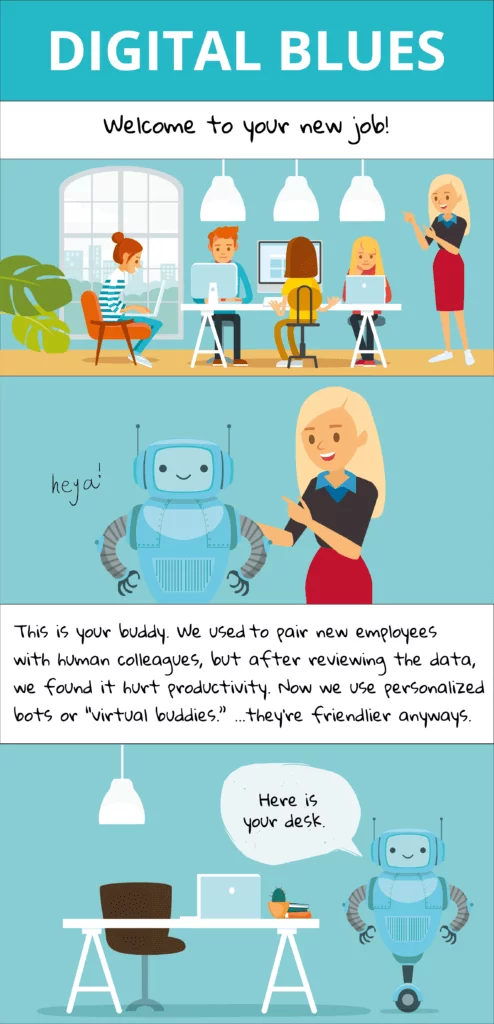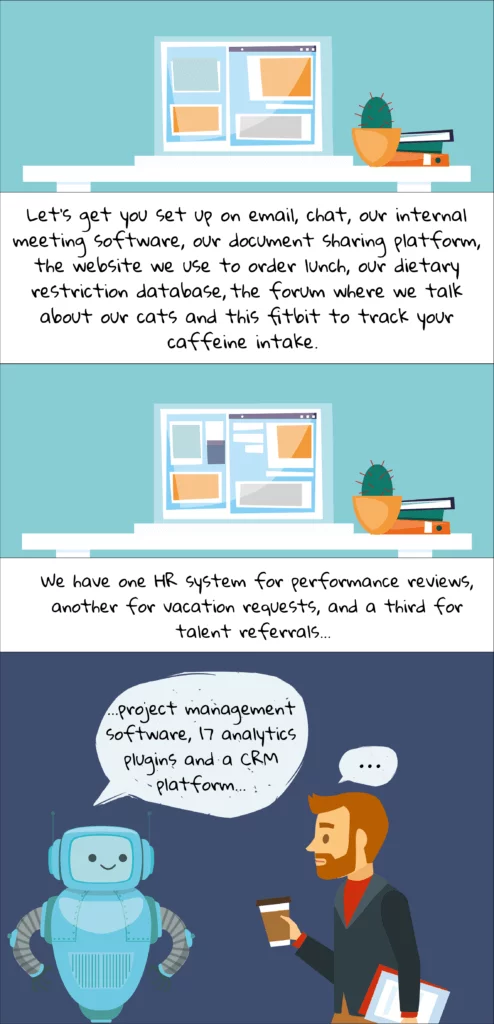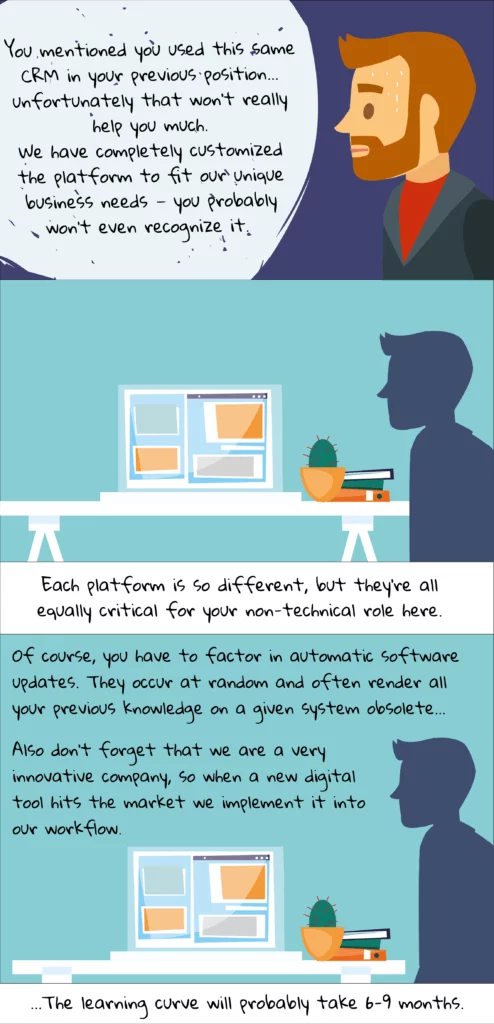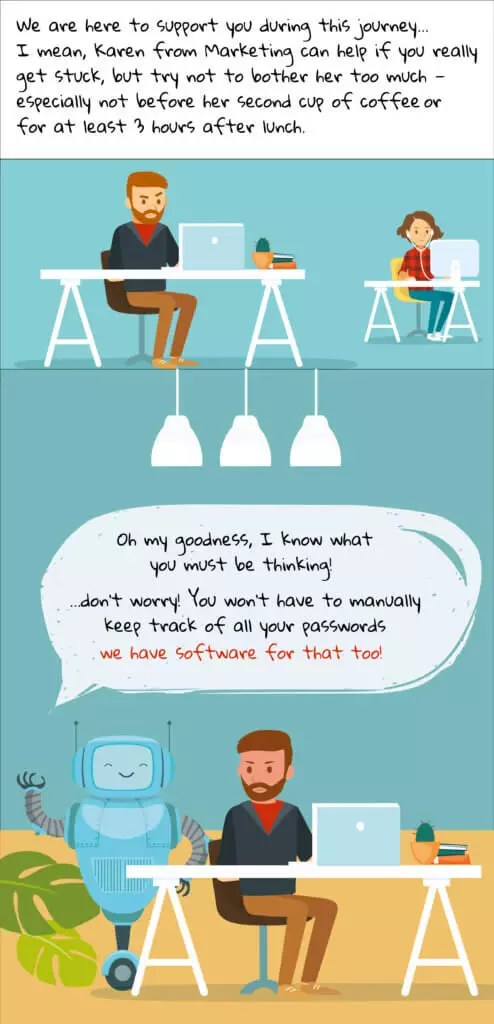It used to be that you arrived at a new job, were introduced to your colleagues and maybe taught how to use the fax machine.
Today, the digital experience of employees is a whole different animal. As enterprise companies shift their internal operations from paper to digital, employees are increasingly reliant on a host of digital tools. In fact, the average number of applications used by the modern employee to perform daily tasks is 9.38, and that number is only growing.
What does this mean? Well, for one, training employees to do their job is now contingent on training employees to use digital platforms. This isn’t limited to technical professions either — it is across the board from HR to finance to marketing.
To illustrate the problem, we decided to, well, illustrate the problem.
This trend is problematic for several reasons. First of all, it is extremely time-consuming. In an era where more than 25% of workers change careers every year, training that lasts months is highly inefficient. Even for employees who do not jump ship, current software training simply isn’t cutting it — only 12% of learners apply the skills received from training to their jobs, the result is a poor digital experience. This often times means employees must self-teach by way of tutorials and their peers.
Instantly simplify the software onboarding process.
The intense focus on technical skills often leaves little room for the professional expertise to shine. The process disregards the unique value for which employees were hired in favor of a temporary skill set. Manufacturing a team of “software technicians” is not only a waste of time but a waste of talent.
The sheer number of software platforms, each with its own unique UX and internal logic, presents a huge challenge for new employees. Throw in updates and software migration into the digital experience — and you risk inflicting burnout on otherwise bright and motivated individuals.
It is no wonder productivity is stagnant despite the promises of software providers. We are exhausting and overwhelming our employees.
So where do we go from here? One thing is certain: the workplace will not become any less digital.
What we need is a new relationship between employees and their enterprise software. We need to teach software to adapt to the employee rather the other way around. We need a new framework for training employees on digital systems that will highlight best practices without requiring employees to memorize processes and features.
We need to empower employee engagement throughout the digital experience rather than overwhelm them with digital clutter.





